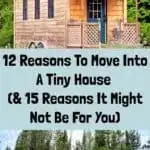
Are you looking to simplify your lifestyle? It might be time to think small.
The tiny house movement is taking over the world, and the hashtag #tinyhouse generates more than a million hits on Instagram.
These homes are defined as a living space with less than 500 square feet, and they seem to promise a gateway to a less burdened life free from unwanted possessions and even location permanence.
It’s easy to get sucked into looking through photos of these stunning homes and daydream how much freer you would feel if you followed this extreme form of minimalism. But does the reality of tiny living match this aspirational aesthetic?
Those who live small will be the first to tell you that this lifestyle can open up a world of opportunities, but there are also serious drawbacks that make it less than ideal for many people.
If you’re considering sacrificing space for the coziness of a tiny house, then do yourself a favor and read through this guide of pros and cons so that you can be more informed about whether it’s the right lifestyle move for you.
Top 12 Benefits Of Living In A Tiny House
Many people feel like they start living their best lives when they go small. Below are some of the benefits of adopting this alternative lifestyle.
1. Lower Housing Expenses
Though the cost per square foot might be higher than with traditional real estate, you’re likely to pay less overall to build or buy a tiny house.
AARP reports that average building costs for a home under 400 feet are $23,000, which comes to less than a tenth of the average price for a full-sized home ($279,500). Likewise, your utility bills are a fraction of the cost when you go tiny because you need to heat, cool, and illuminate a smaller overall space.
2. Faster Home Appreciation
Non-mobile homes under 500 square feet are appreciating twice as quickly as standard builds (19% compared to 9%), especially when they offer an option for affordable housing in dense urban environments. This means that you can have confidence that someday you can cash in on your investment.
3. More Achievable Home Ownership
Just 65% of Americans own their own homes, but when you look at tiny homes that number jumps to 78%.
Low purchase costs mean few people take out a mortgage to live in one, which potentially makes your goal of home ownership more achievable if you look small.
4. Less Wasted Energy
If you’re concerned about your carbon footprint, then going small can be a sustainable choice.
You’ll waste less energy on your utility bills, and tiny homes tend to be easier to outfit with renewable energy sources like solar power. There’s even a good chance that you’ll cut down your water usage with a composting toilet, which breaks down sewage without putting it in the water system.
5. Mobility
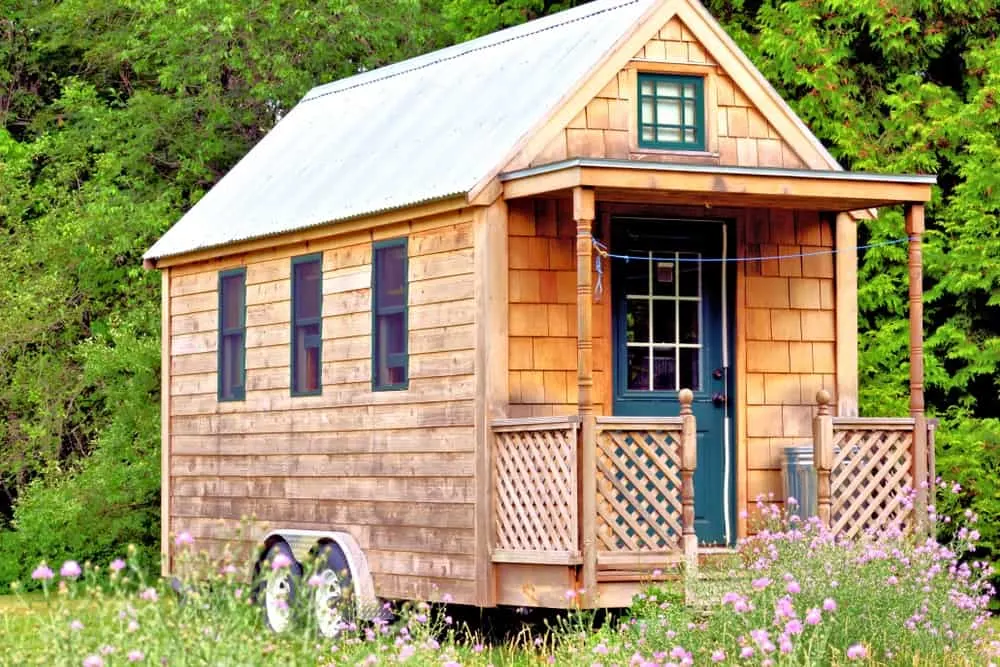
In order to comply with building codes, many tiny houses are built on wheels. Some are even small enough to move with a standard truck, meaning that the owner can take them wherever they want and change their outdoor vista at will.
Many people take advantage of this mobility to enjoy life on the road, migrate with the seasons to enjoy warmer climates, or follow seasonal jobs without ever leaving the comfort of home.
You’ll get more support and amenities than with a standard camper but none of the inconvenience of a full-sized house.
6. Easy Maintenance
Smaller spaces are easier to maintain, so you’ll spend less time each day getting your home into shape. Expect to spend no more than two or three hours to clean a tiny house thoroughly.
7. Close to Nature
When your house is small, you’re likely to find more excuses to spend time outdoors. Many people put tiny houses on large plots of land and devote their recreational time to tending a garden or relaxing on a patio.
8. Clutter-Free Living
Maintaining a small space doesn’t leave room for excess, meaning that you’ll need to cut your belongings down to the essentials. This eliminates clutter and helps you prioritize the possessions that truly add value to your life.
9. Less Food Waste
When you have limited space to stockpile home goods, you’re forced to use the ones you have.
Many tiny house dwellers report that they waste less food because they can store less at a time in their pantry or fridge, so things don’t fall between the cracks as easily.
Likewise, less storage space for cooking items means your appliances need to do double duty, so you’ll own fewer bulky items that rarely get used.
10. Convenient for Off-Grid Living
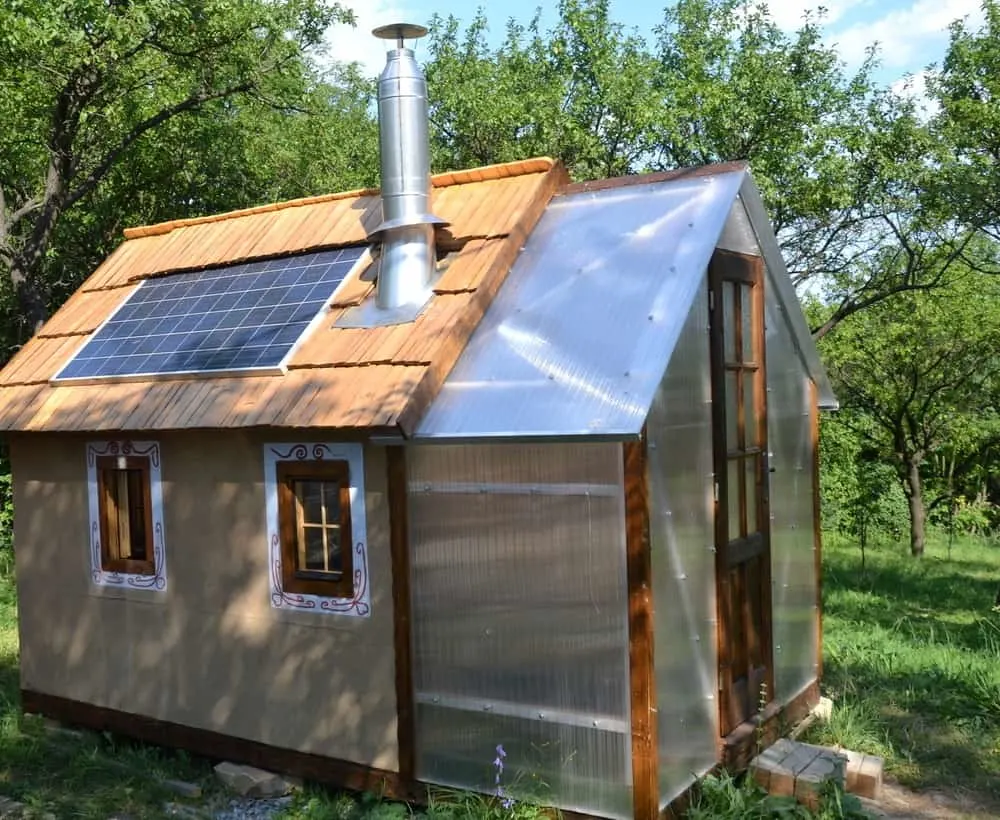
If your goal is to improve your self-sufficiency, then a tiny home might be your ticket to success.
Lower upfront costs and less monthly energy use means you can offset your consumption with a portable solar kit or a composting toilet that keeps you independent from a septic system.
11. Intentional Community Opportunities
Living in a small house doesn’t mean your social opportunities are limited. It’s becoming increasingly common for people to form tiny home communities, often with larger community buildings like kitchens, pools, or outdoor recreation spaces to offset the small square footage per dwelling.
Check out this guide to intentional tiny home communities!
12. You Can Splurge on Building Materials
When you’re building small, you can be more extravagant with the cost per square foot than you could with a larger home.
This means you can invest in the quartz countertops that caught your eye or the sustainably harvested hardwood floors that you couldn’t have afforded otherwise.
In other words, it’s possible to personalize tiny homes in ways that might be difficult to justify on a larger scale.
15 Reasons to Say No To A Tiny Home
It’s easy to idealize living in a tiny home, but sacrificing your space isn’t without its drawbacks.
Below are some of the top reasons to reconsider your goal of going small. Some of these downsides might seem obvious, but I guarantee that a few will surprise you.
1. (Expensive) Custom Appliances
Living in a smaller space means that standard sized appliances won’t often fit in your home. This means you’ll have to make do with a tiny refrigerator or with a two-burner stove. And while these appliances might be less functional than largescale ones, they often cost more and should be accounted for when you’re designing your home.
2. Composting Toilets Aren’t Fun To Clean
To stay mobile, many tiny homes aren’t connected to a septic system and contain a composting toilet.
No one’s designed a self-cleaning model yet, meaning that someone in the household will need to take on the task every few weeks.
3. You’ll Need to Pair Down Your Hobbies
Part of the appeal of a tiny house is living intentionally, but it’s an inconvenient reality that you might need to pare down your hobbies.
You’ll likely lack pantry space for stockpiling home-canned goods, and leaving a half-finished puzzle on the kitchen table is a bad idea if it also serves as your meal prep space and office desk.
Few tiny homes have much room for practicing yoga or even storing musical instruments, so you might need to find alternative ways to spend your time.
4. Less Convenient Storage Space
Tiny home builders are geniuses when it comes to designing storage opportunities, but the reality is you’ll be left with far less space than in a regular home.
Extra bedding, guest towels, season clothes, and even holiday decorations may not fit well in your home, and the chances are the lack of closet space will require you to pare down your wardrobe to the essentials.
Likewise, these extra storage spaces are often crammed into inconvenient parts of the house, meaning you might struggle to find what you need.
5. You’ll Clean More Often
While a tiny home provides less space for messes, the messes that form will be harder to hide, and even a small amount of clutter can overpower the space. That’s why many people find they clean more often when they go tiny, even if each cleaning session takes less time than before.
6. Less Indoor Privacy
When your home is small, even a few people can fill up the space. Living with kids can feel overwhelmingly cramped, and there’s little space to retreat to if you get in an argument with your partner.
For introverts, this publicity can feel overwhelming if you live with someone else.
7. More Unsustainable Packaging
A lack of storage space makes it hard to buy food and household items in bulk, meaning that you’re inevitably going to have to deal with more packaging when you buy smaller amounts of what you need.
Likewise, there’s a good chance you’ll need to run to the store (wasting both time and gas) more often if you can’t stockpile basic necessities at home.
8. Less Potential for Food Prep
It’s difficult to make a week’s worth of meals when you’re dealing with a small-scale refrigerator (and most likely no dishwasher).
This means you’ll either find yourself cooking more evenings or possibly giving in to the lure of takeout.
9. Pets Can Feel Crowded
It may be your dream to dwell in a tiny house with your three Dobermans, but the reality is that pets can fill a small space quickly.
Some tiny home dwellers complain that they have little available space for a cat’s litter box, which means they must continuously move it out of their shower when they want to use it.
10. A Lofted Master Bedroom
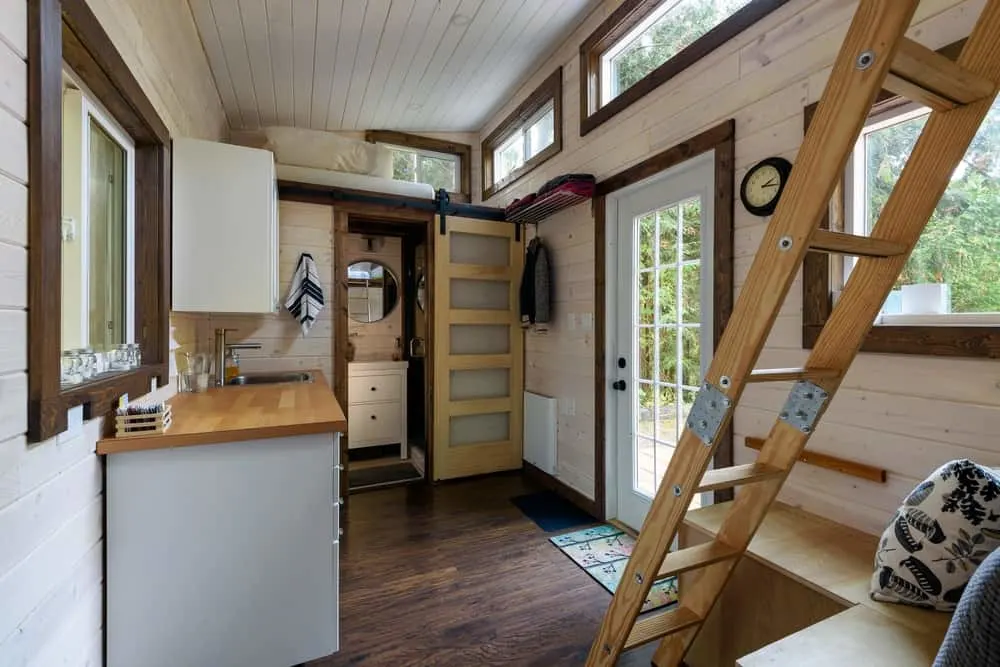
The majority of tiny houses make optimal use of available space by lofting the bedroom over the main living space. This means it’s often only accessible by ladder and rarely leaves enough headspace to stand up, or sometimes even sit up.
This isn’t ideal for people who regularly get up in the middle of the night, as you run the risk of bumping your head or falling down your ladder in the dark.
11. You Need a Big Truck (If You Want to Be Mobile)
If you’re passionate about tiny house living for the potential mobility, it’s important to remember that the moving process isn’t effortless.
Most homes are heavier and harder to move than standard campers, so you’ll need to find a reliable vehicle to tow it and plan on renting one when necessary.
12. Limited Entertaining Capability
For those whose idea of fun is hosting a huge dinner party, tiny house dwelling might make you crazy.
It’s hard to fit multiple people into most small homes without feeling cramped, so your entertaining options might be limited to outdoors or at other locations.
13. You Need to Comply with Zoning Rules
Despite their popularity, housing rules in the United States haven’t yet caught up with the tiny house movement, and the zoning laws in many places don’t consider structures smaller than 400 square feet to be legal homes.
This might mean you can’t put your tiny home on a piece of land unless another house is already there, or you’ll need to add wheels and keep your home to the scale it can be considered a “vehicle,” even if you never plan on moving it.
One common workaround for these problems is to buy a piece of land, rent out the home, and use that income to live in a tiny house you park in the backyard.
14. Financing Might Not Be Feasible
Tiny homes rarely qualify for traditional mortgages, so you might struggle to fund your house if you can’t pay for it outright. That’s because many banks don’t consider them to have enough value to act as collateral, so you might need to find ways to qualify for personal loans instead.
15. (Possibly) Difficult With Kids
The majority of people who live in tiny houses are single or childless, and for good reason.
Adding kids into such a small space adds lots of complications, especially if the only sleeping space is a loft with a ladder. The lack of private space in a tiny home can also feel overwhelming with multiple kids, especially if they are teenagers.
Do Your Research to Make the Right Tiny House Decision
When it comes to deciding whether you should live small, there’s no right or wrong answer.
Some people love the freedom it gives them to own their own home without going into debt, while others find the lack of space too limiting to be worth it.
Regardless of where you think you fall, it’s crucial to weigh out the decision carefully before committing to living tiny.
If you’re intrigued by tiny homes but not ready to commit longterm, consider renting one for a few weeks to see whether you can make the lack of space work for you. Airbnb offers rental opportunities for thousands of tiny homes around the globe, so give one a try and see whether it feels right for you.
Pin This To Save For Later
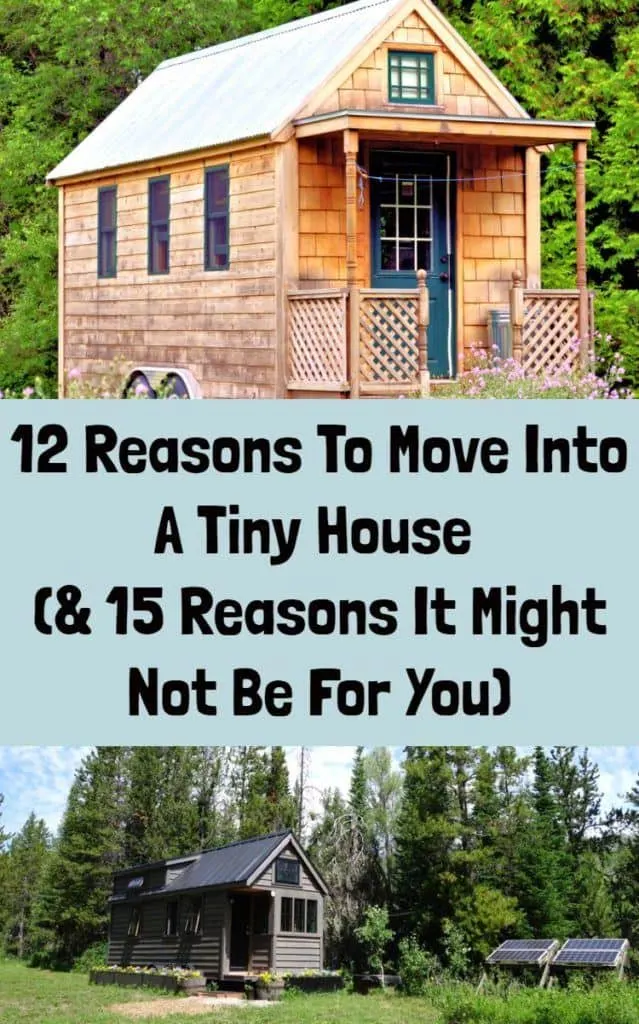

Get the famous Rural Sprout newsletter delivered to your inbox.
Including Sunday musings from our editor, Tracey, as well as “What’s Up Wednesday” our roundup of what’s in season and new article updates and alerts.


